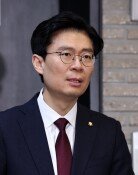NK Developing Another Deadly Weapon: Hackers
NK Developing Another Deadly Weapon: Hackers
Posted October. 21, 2009 08:52,
The hacking unit of the North Korean military is drawing attention as major South Korean Web sites, including those of defense and other government agencies and think tanks, have been recently hacked.
○ Cultivation of computer talent from age 10
The Pyongyang Students and Children`s Palace at the center of the North Korean capital and Mankyongdae Children`s Palace at the end of the citys Kwangbok Street are the main centers for training the Norths hackers.
The institutions are popular destinations for South Korean visitors to Pyongyang, who often encourage students sitting in front of PCs there. Yet they do not realize that many of the Norths hackers are trained there.
The North runs elite middle and high schools throughout the country, but computer prodigies are unusually placed at Kumsung High Schools 1 and 2, which are normally geared toward arts and sports.
The two schools have cultivated students aged 10 or older into computer whizzes since 2001.
Kim Hung-kwang, the head of a coalition of former North Korean intelligentsia in Seoul, said he helped draft educational programs for the computer elite as a professor at Hamhung Computer Technology College.
Those students receive more than 500 class hours of annual training over a six-year period, he said.
The education level in North Korea matches that of South Korea in computer engineering.
Gifted computer students move to the palace centers immediately after school to learn practical computer skills. Many who are trained this way are cultivated into hackers groomed into the Norths top talent with classified information, as well as gaining entry into the military and economic elite.
Most of the gifted students hail from wealthy families with computer access at home.
○ No. of hackers disputed
The number and capacity of North Korean hackers are under dispute. Certain reports say the Norths hacking capacity exceeds that of the U.S. CIA. South Korean intelligence sources also suggest that Kim Il Automation College (aka Mirim College) produces 100 hackers every year, and that more than 1,000 North Korean hackers work in China.
Skeptics say the claims are exaggerated, however. A military unit dedicated to cyber operations is near Pyongyang Sanwon, Munsoo Street in Pyongyang, and hackers number just 600, including those working in deeper inland areas, Kim said.
Hackers in China work in several groups headed by colonellevel officers. The hackers were previously dispatched to different locations and conducted activities in China as individual groups, but now operated in China in several groups.
He added, Though they operate in several groups, Web sites managed by a couple of Web masters will be vulnerable to attacks if they are mobilized systematically.
A North Korean defector who received elite engineering and technology education in the North said, Mirim College educates only 10 students at the elite class, while it produces about 100 people as technical human resources every year.
He said general technical experts from the college are dispatched to military units for activities not related to computer hacking, and only students from the elite computer class can get overseas training. Hence, he said, to perceive all students there as hackers is incorrect.
Common knowledge on the North Korean militarys technical surveillance bureau, which is considered a hackers group, could be inaccurate as well. The intelligence section is classified as part of the combat intelligence and technology intelligence bureaus, with the latter comprising a telecom unit and the former focusing on eavesdropping.
The technology intelligence bureau has its main bases in Sungho-ri near Pyongyang and Yongsong. It eavesdrops on U.S. military communications, monitors South Korean broadcasts, and analyzes Japanese broadcasters.
zsh75@donga.com







